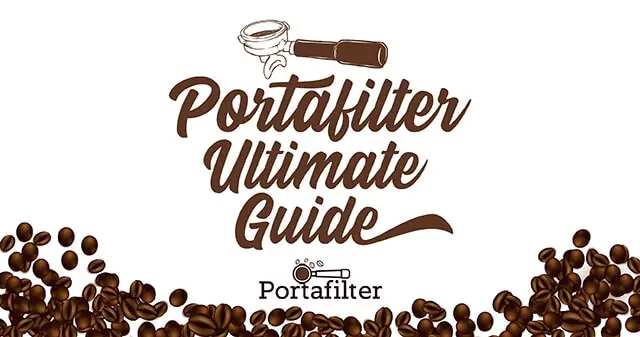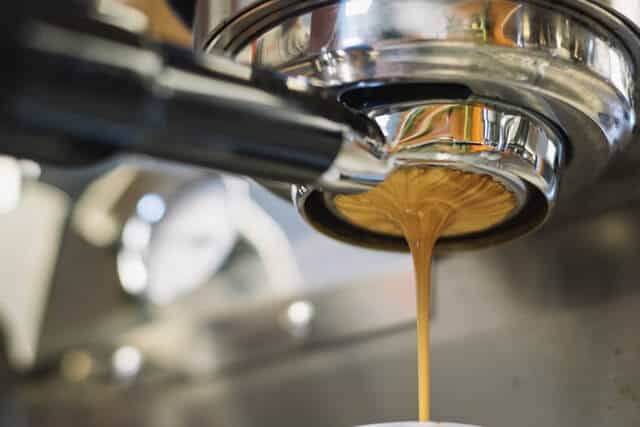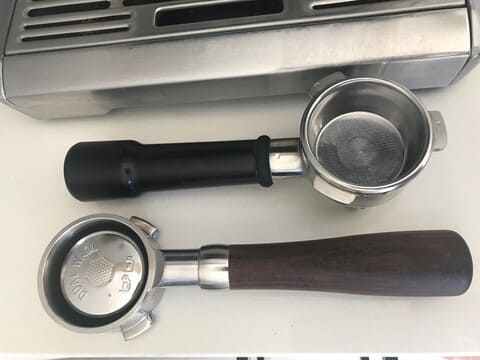As an Amazon Associate I earn from qualifying purchases. When you use our links, we may earn an affiliate commission. Learn more.
Pressurized portafilters will allow you to brew an amazing cup of coffee from the comfort of your own home. But to get the best results, consider the type of grind you use.
So, what is the optimal grind size for a pressurized portafilter?
Most grind sizes will be suitable for a using with a pressurized portafilter. But it is advisable to avoid coarse grinds. This can limit the water that gets through the beans, leading to a weaker flavor. The beans you use can also significantly impact how the coffee tastes.
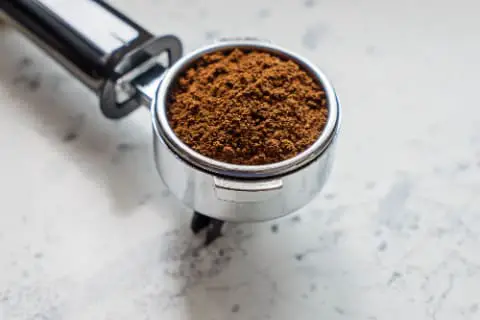
Many beginners will use pressurized portafilters.
It will work with most grinds, so you don’t need to worry about getting a perfect size. But there are still a few things to remember when preparing your coffee maker. Keep reading to learn how to get the best flavor from a pressurized portafilter.
Does Grind Size Matter For A Pressurized Portafilter?
Generally, grind size doesn’t significantly impact the quality of coffee from a pressurized portafilter. You shouldn’t have any problems using fine or medium grind sizes. But you might have some issues if you use a coarse grind.
The downside is that you risk not extracting enough flavor from the coffee beans, creating a bland brew.
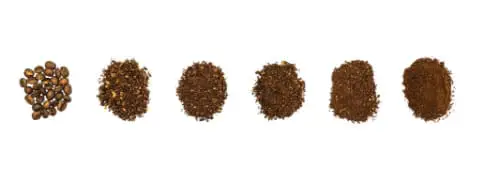
Though the grind size is less critical than it is when using a non-pressurized portafilter, it can still have an impact on the taste.
Too coarse, and it will be too watery.
If it is too fine, you risk creating a bitter brew. Playing around a little to find which one works best for your tastes might be a good idea.
How Does Grind Size Affect a Pressurized Portafilter?
To understand how grind size affects a pressurized portafilter, we need to know a little about how pressurized portafilters work.
The water will flow through the device, reaching the hole at the bottom. Because there is only one extraction hole, the water pressure will build up.
This ensures that the best possible conditions will allow you to extract the best possible flavor from the grounds.
The downside is that the water can run too quickly through the basket if the grounds are too fine. This can sometimes lead to weaker coffee.
Consider the type of coffee you are planning on making. For example, if you plan on having a crème espresso, you might need to choose a finer grind.
Can You Make A Good Espresso With A Pressurized Portafilter?
You can make a good espresso with a pressurized portafilter using the correct dosage, fresh coffee beans, and optimum water temperature. The size of the grind will have an impact on the flavor. But it won’t be as dramatic as a non-pressurized portafilter.

Here are a few things that you can do to make a good espresso:
- Dosage. This is a measure of the amount of coffee that you are adding to the mix. Generally, you will need to use three teaspoons of ground coffee for every eight ounces of water. Though you can increase the amount of ground coffee, you are using to create a stronger drink. You can adjust the ratio of water to coffee on the machine settings. Many reported that a ratio of one part coffee to two parts water produces good results.
- Water temperature. The heat of the water will determine the amount of flavor you can extract from the coffee bean. As a result, medium heat is often preferred when you are making a darker roast. You will need to use a higher heat if you prefer a lighter blend. Your machine should allow you to adjust water temperatures.
- Milk and sugar. Some people prefer to add milk and sugar. Others say they will alter the taste too much. You should play around to find the right amount of milk and sugar for your preferences.
- Brand of coffee. Sometimes, it won’t be the way the coffee is prepared. Instead, it will be the brand or bean flavor that you need to adjust.
When you are making these changes, it’s essential to be patient.
Sometimes even a relatively minor change, like adjusting the water temperature by a few degrees, can significantly impact the coffee’s flavor.
This free cheat sheet will improve your coffee brew by providing quick information on brew ratio, grind size, optimal brewing time, and more.
Do You Need to Tamp A Pressurized Portafilter?
It might be necessary to tamp the pressurized portafilter puck lightly. This will flatten out the grinds. But avoid applying too much pressure. This can make it harder for the water to penetrate the grounds and limit the amount of flavor you can extract.
Sometimes, a pressurized portafilter will come with a plastic tamp. You might find a metal tamp that will fit with a pressurized portafilter. But that doesn’t mean that you should use these items.
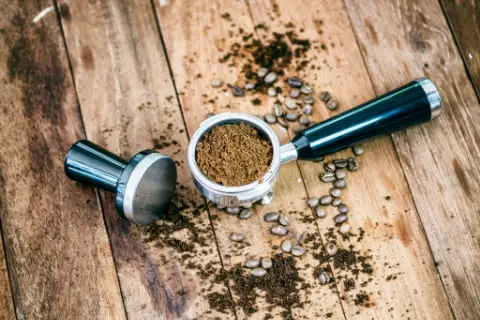
The risk is that you will tamp it too hard.
This will create a firm layer, which the water pressure might not be able to penetrate. Because of this, it’s common for you to avoid tamping the pressurized portafilter.
Here are three useful tips to remember when you are preparing a pressurized portafilter:
- Whisk the grounds. If you have particularly fine grounds, you might need to whisk them. This ensures that you are breaking up any clumps that might have formed.
- Lightly tamp only. It will be acceptable to tamp lightly; avoid placing too much pressure. This is especially important when using a finer grind, which can be easier to compress. In this case, the only thing to consider is ensuring that the grounds are even.
- Brush away the grounds. Again, this is most important when you are using finer grounds. These are more likely to get into the threads of the machine and cause problems.
Final Thoughts
The good news is that pressurized portafilter machines were designed with ease of use. Because of this, they can work with a wide array of grind sizes.
You might encounter an issue when you use coarse grounds.
The water can penetrate these too quickly, limiting the amount of flavor you extract. This can leave you with a weak cup of coffee.
This free cheat sheet will improve your coffee brew by providing quick information on brew ratio, grind size, optimal brewing time, and more.
